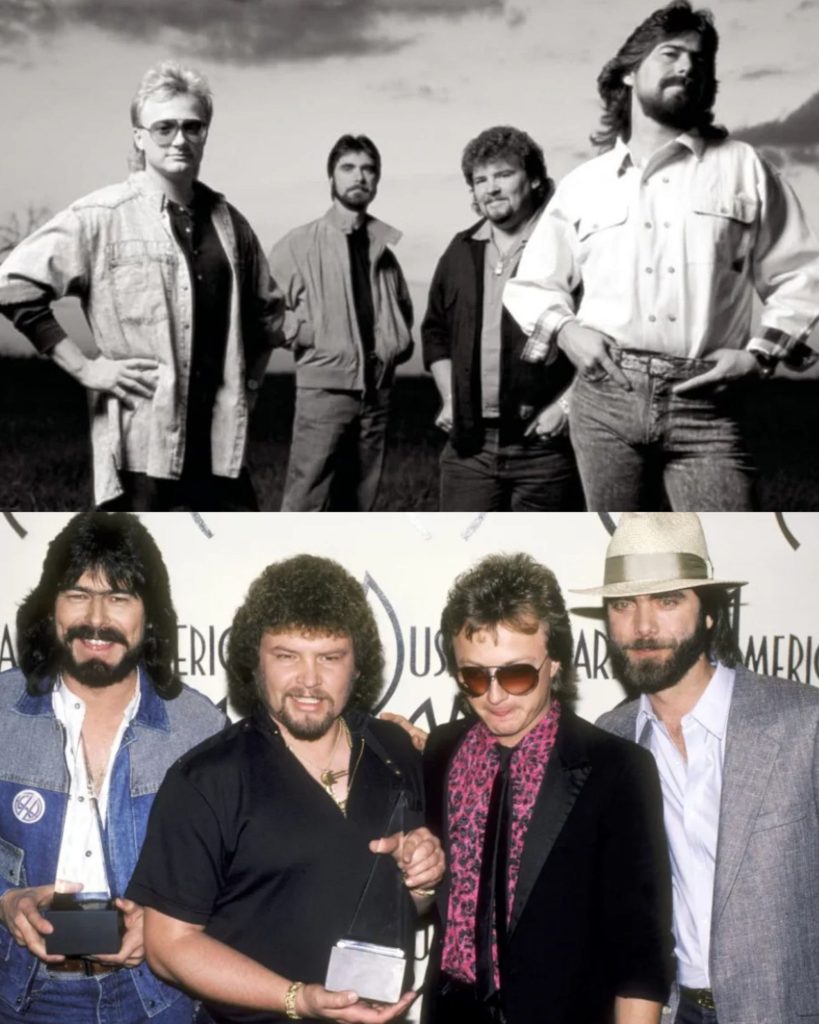
Forty years ago, four boys with worn boots and a hymn-book belief walked into a studio and returned with something the polished Nashville machine had nearly lost: the aching heart of country music. Alabama, with Randy Owen’s warm lead, Teddy Gentry’s steady low end, Jeff Cook’s fiddle and Mark Herndon’s beat, turned a quiet mission into a stadium-sized revival.
The band arrived at a moment when the fiddle and steel seemed destined for the shadows. Country radio was chasing pop gloss and safe formulas. Alabama refused the eraser. They layered gospel-rooted harmonies over fiddles and told plain stories about small-town life — faith, hard work, Saturday nights, and love that felt honest. The effect was immediate and strange: songs that were comfortable in a barn dance and powerful enough for arenas.
What made them different was not flash but conviction. In performances, Randy Owen’s voice could be tender and rough at once; it sounded like a neighbor singing across a porch, not a salesman pitching a trend. That intimacy turned ballads into personal confessions and party songs into community anthems. Fans who remembered diners, church basements and family picnics heard their lives reflected back louder than ever.
“I always felt we were singing about people we knew — our mothers, our neighbors, the kind of faith you hear at Sunday service,” Randy Owen, lead singer of Alabama, said. “We tried to be true to that, not chase whatever sounded trendy that year.”
Behind the scenes, their rise was part craft and part stubbornness. Producers in Music City had long been tempted to smooth edges, but Alabama’s records kept the scrape of strings and the breath between notes. That rough warmth helped songs cross over to adult listeners who wanted familiarity, and to younger crowds hungry for music that still felt real. Industry names who followed acknowledged that the band’s success reopened the market for traditional instruments and simple storytelling.
Music historians trace a clear line from Alabama’s breakthrough to the next generation of country superstars. When artists like Garth Brooks and Alan Jackson later filled arenas, they did so on a path Alabama helped clear: blending pop-sized spectacle with country’s narrative soul. The band’s influence reshaped radio playlists and record labels’ thinking, proving commercial success need not erase roots.
“Alabama proved you could sell out a hall and still let the fiddle cry,” said Dr. Harold Pierce, country music historian and author. “They taught the industry that honesty — not polish — was a marketable value.”
For older listeners, the band’s songs became a soundtrack to daily life — the background to porch conversations and family drives. For performers, Alabama’s career became a lesson in resilience: a reminder that audiences respond to authenticity and that music’s power often lies in simplicity. Concert scenes from decades past still show couples holding hands during ballads, and bands today still borrow the harmonies and dynamics Alabama perfected.
Their catalogue reads like a manual on how to keep tradition alive while reaching wider audiences. They married fiddles and steel to choruses built for big rooms, kept narratives short and sharp, and respected the quiet places where music means something personal. The gamble worked. What began as an unassuming studio session became a cultural pivot, and the sound they championed is still audible in country’s mainstream.
As the story unfolds, the chord progression that launched this change still rings in living rooms and arenas alike — a reminder that sometimes the simplest songs hold the deepest truths —